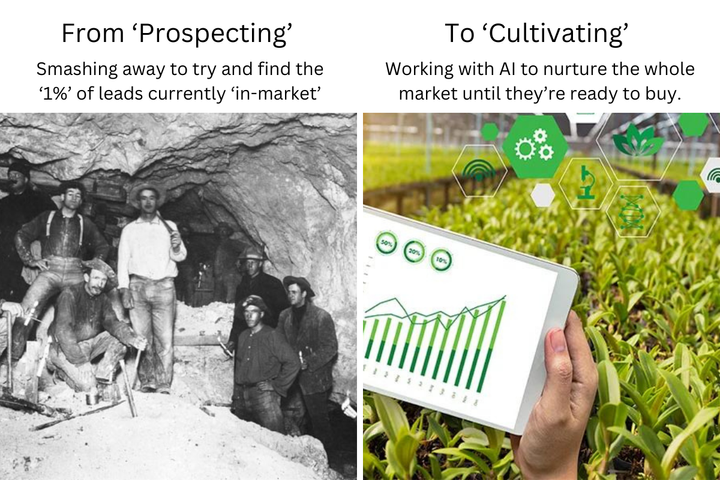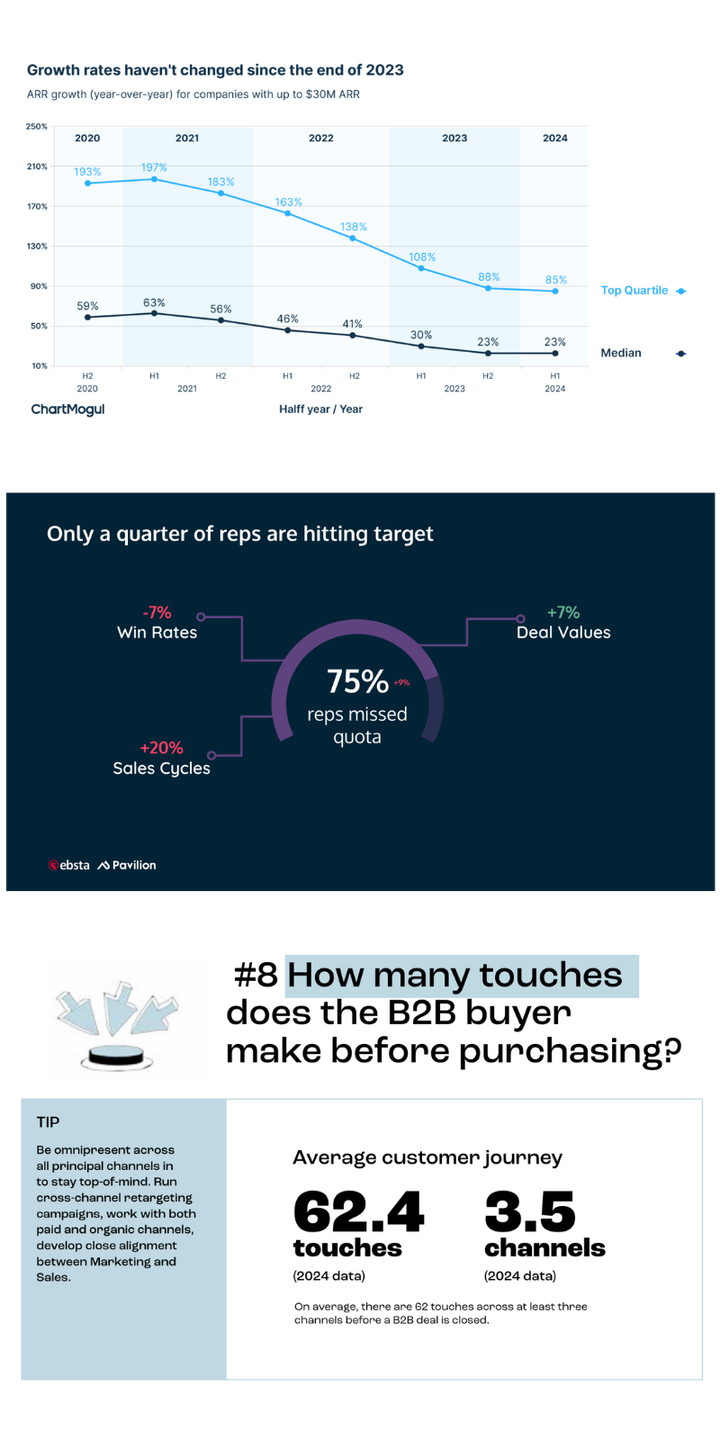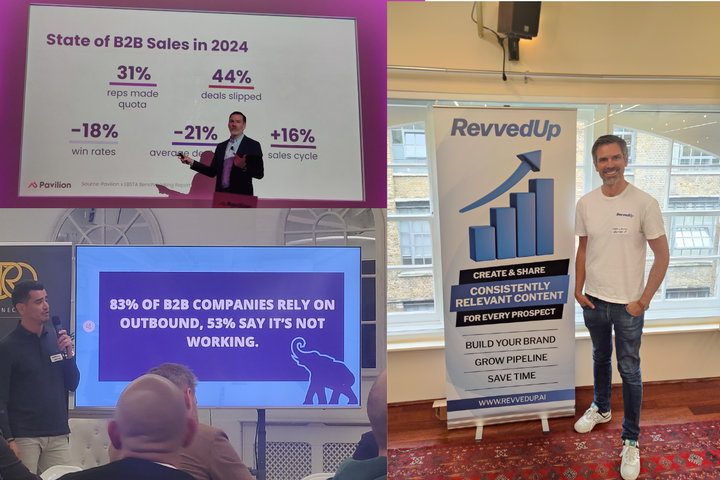10 'Quick' Ways You Can Move Faster In Business
10 quick ways to increase your execution velocity and gain competitive advantage through speed.

I recently post on LinkedIn that speed is one of the most accessible but under-utilised asymmetric risks we can adopt in our careers and businesses.
Imagine two scenarios:
Company A moves cautiously, weighing every decision, analysing each outcome. Over the course of a quarter, let's assume they collectively execute on 50 initiatives, with an 80% success rate.
Company B acts swiftly, embracing opportunities, learning from feedback, and iterating rapidly. In the same time period, they rapidly execute against 100 initiatives, with a poorer 60% success rate.
Who's winning? Company B! They've had 60 wins over 40 at company A, a 50% advantage.
Not only that, but they're learned at a far more rapid rate, which means they have accumulated 100% more feedback (positive & negative), which they can utilise to move even faster and more accurately next quarter.
The first approach often perceives risk in action, while the second sees risk in inaction.
Here lies the asymmetric advantage: The potential losses from moving quickly are frequently minor and reversible.
The gains, however, can be monumental and game-changing.
They compound and accelerate, meaning company B will leave A in the dust over time.
Here are 10 concrete ‘quick’ ways you can start to gain those advantages.
1. Get comfortable with incomplete data, and taking actions to create it
As a leader, you'll rarely have complete data before needing to make important decisions.
Get used to this reality, and focus instead on determining what key pieces of data would help inform your decision-making.
Then take swift action to go out and actively generate that data, whether through customer interviews, prototype tests, or other experiments.
Don't let the lack of complete data paralyze you.
This is critical, as I see so many emerging leaders waste weeks or even months of time on ‘derisking’ decisions with deeper and deeper data analysis, losing previous time they could have used to be actively moving toward a solution or testing their approach and generating fresh, meaningful data on which they could iterate.
2. Don’t try to form consensus
Trying to get alignment across a diverse set of stakeholders on each decision will severely slow you down, particularly where there are almost inevitably competing interests.
Define clear roles and responsibilities, communicate key context, but then empower individual owners to drive decisions without consensus. You can course-correct later based on outcomes.
And if there is no way to move forward without making a decision to break a deadlock, don’t always look for the easy ‘middle ground’ of compromise. This is how camels are created when race horses are needed.
With great power comes great responsibility, and this is something many leader abrogate. To move faster, it’s likely you’ll need to make some unpopular decisions, which is where the concept of ‘disagree and commit’ can be incredibly useful to an organisation.
3. Derisk decisions with clear guardrails and checkpoints
Rather than aiming for that all-elusive certainty before moving ahead on decisions and actions, clearly define operating guardrails and checkpoints to assess if the course of actions is having the desired impact (or if it’s having a net negative effect).
This creates boundaries against the risk of major issues arising.
They need to be objectively measurable and sit outside of the remit of the person who made the decision, as everyone has strong psychological biases that mean they will try to justify that their decision was the right one post-hoc.
Then within those guardrails, charge ahead with speed and vigour.
4. Build robust systems for rapid feedback loops
If you want to get really good at operating with speed, then you’ll need to put systematic processes in place to quickly gather feedback from real interactions after decisions.
Short feedback loops enable course correction and learning vs. needing extensive upfront analysis.
This could include regular cross-functional retros, in-product bug/feature usage flags, direct feedback from sales conversations, analysis of leading KPIs and inputs pre/post-decision including conversion rates, reviewing pricing/discount trends and a whole host of other ‘canary in the mine’ data sources.
The tighter your operating model, systems and tools the easier it will be to get comfortable these fluctuations in performance will be caught quickly.
5. Apply Occam's Razor
Occam’s Razor is the theory that if you have two competing ideas to explain the same phenomenon, you should prefer the simpler one.
Applied to moving at speed, this means preferring the simpler, less complex or nuanced approach. Complexity breeds delays--keep it simple whenever possible.
6. Don’t get distracted by edge cases
Edge cases can suck up time as you account for every unlikely scenario.
I’ve seen so many great ideas and executional plans grind to a halt as everyone competes to share all of the obscure and unlikely reasons it won’t work in x-special circumstance.
Ignore those distractions, and focus energy on addressing the core 80% use cases well over trying to be perfect.
Capture edge cases to clean up later.
7. Adopt the ‘more common than not’ approach
This is related to the ‘edge cases’ scenario, but where a particular approach won’t be able to be applied all of the time, doesn’t mean it’s DOA.
As a rapidly growing startup, you’re trying to lay down the train tracks of process without it becoming a throttling red tape.
Having processes that can be applied ‘more often than not’ is a great rule of thumb that will help guide people to take a more standardised, common approach (which is more scalable and easy to test & iterate on); without imposing stifling bureaucracy)
8. Trust your gut
‘Gut feel’ gets a bad rep. The reality is that many of our decisions are actually made by our ‘system 1’ thinking (to reference Daniel Khaneman’s highly influential book, ‘Thinking, Fast and Slow’)
We then seek to rationalise and justify them through applying data and logic after the fact. This can absorb so much time, versus celebrating the fact that you’ve likely accumulated a lot of tacit knowledge and wisdom over the years that should be listened to.
Of course, this doesn’t mean every decision should be a shoot from the hip one…but when we have a niggle over something that just won’t go away despite all the logical data suggesting it’s fine…I bet we all know that 9/10 we wished we’d listening to the niggle!
9. Get comfortable with failure meaning feedback vs. disaster
See failures as inputs to further refinement, not disasters. This minimises hesitation in moving quickly.
Fail fast, adjust, and try again.
Many people talk about it, very few internalise it as their own operating system.
If you can, you’ll find your velocity increasing at an order of magnitude.
10. Use AI
Don’t get left behind…AI is here, and it’s going to impact your work and life.
Rather than being afraid (or over sceptical) of it’s impact, utilise it as a tool to move fast.
Instead of calling a meeting to sense check your thinking, us AI as a thinking partner and foil to challenge your approach.
Use it to do research, draft communications, QA what you were going to do, suggest alternatives, consider risks or options you hadn’t…the power is (almost) endless, and those who really embrace AI will start to materially outpace those who don’t.
Next step
Want to leverage AI, make a quick decision and massively increase the speed at which you can personalise and engage target accounts?
Jump on a demo for RevvedUp and enjoy a risk free implementation of scalable Account Based Marketing before your competitors get the chance!


